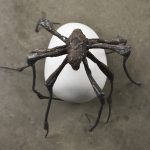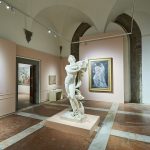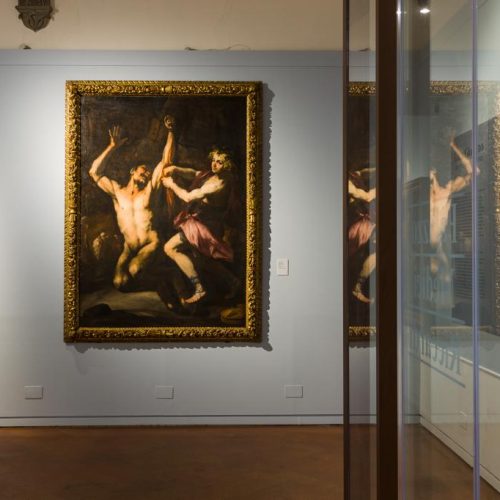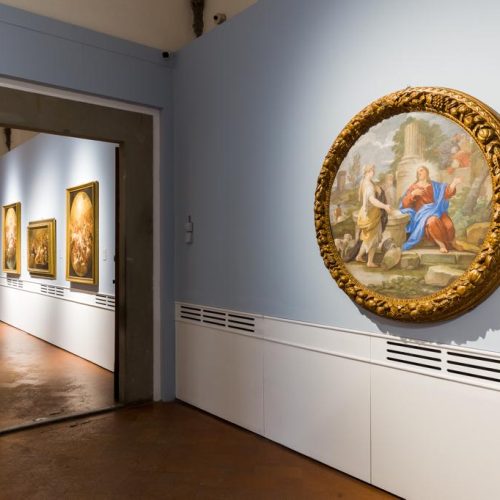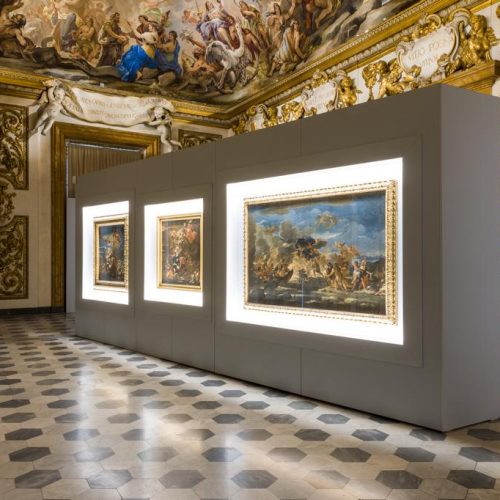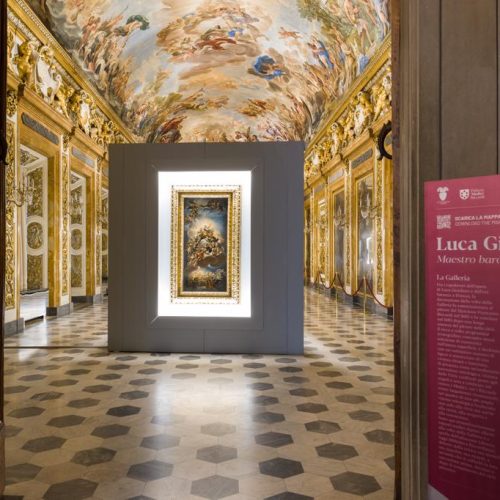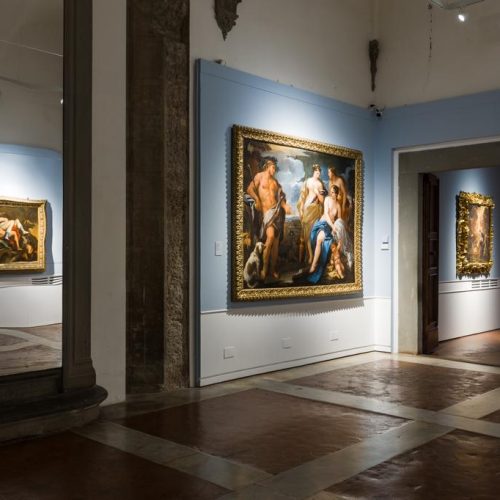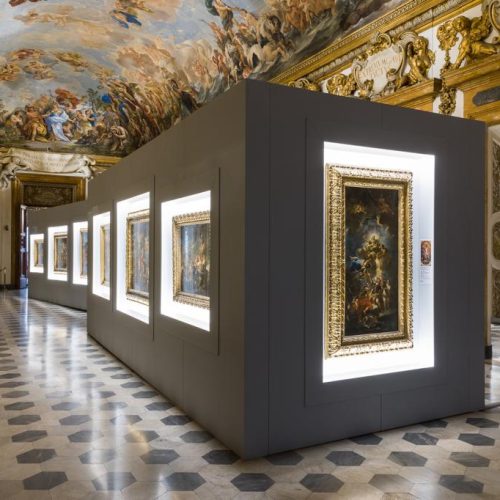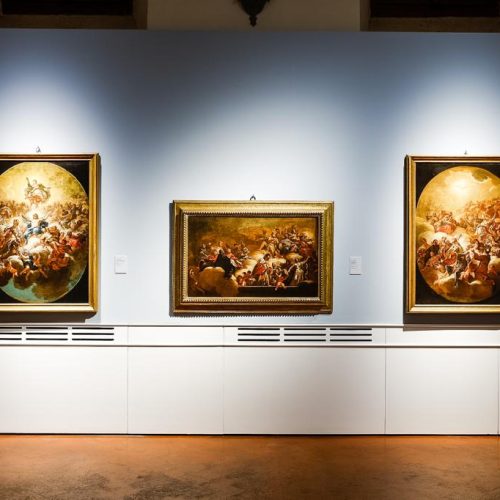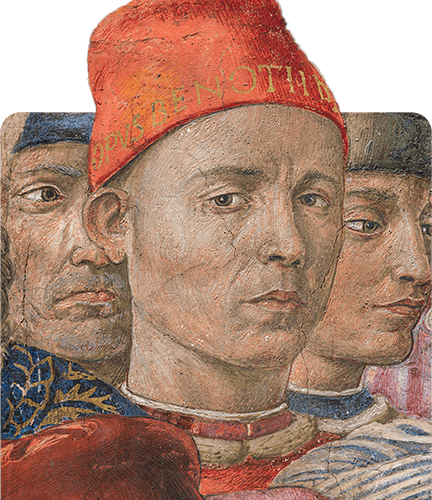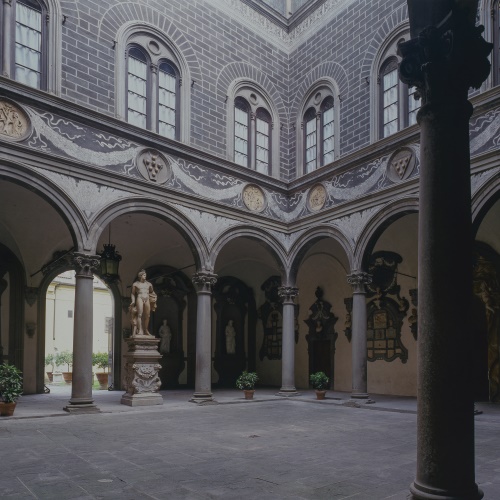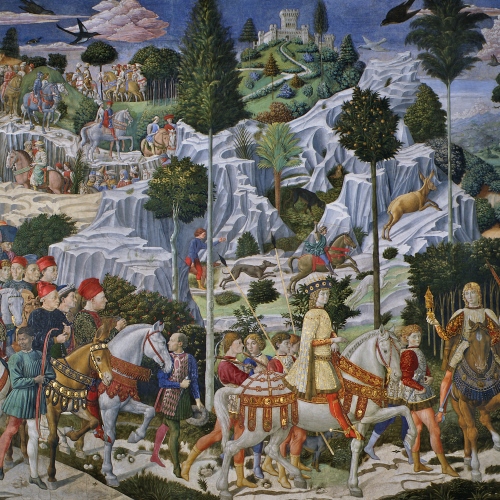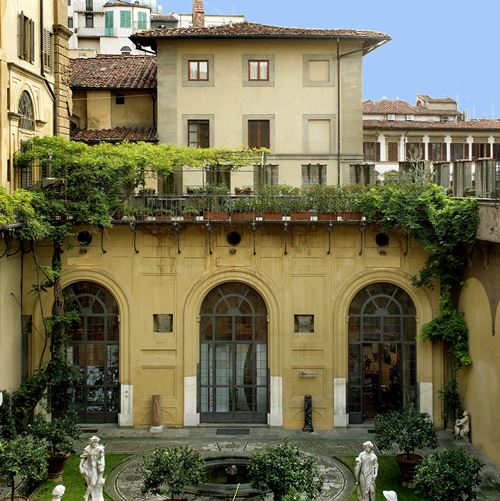Luca Giordano
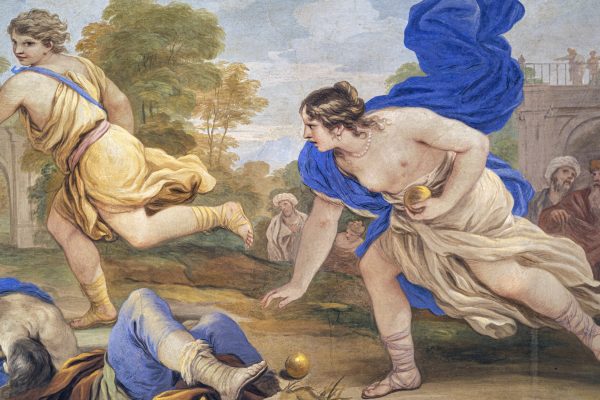
to 05 September 23
The Luca Giordano. Maestro barocco a Firenze [Luca Giordano. A Baroque Maestro in Florence] exhibition, curated by Riccardo Lattuada, Giuseppe Scavizzi, and Valentina Zucchi, brings testimony into the halls of Palazzo Medici Riccardi of the indelible mark left in Florence by the Neapolitan painter through a display of some of his masterpieces commissioned in the early 1680s. Luca Giordano’s extraordinary talent – such that a few years later he would be appointed court painter of the most powerful monarchy in the world at the time, Spain – was likewise acknowledged in Florence by wealthy and important families who immediately grasped his potential.
Giordano was highly praised by the Florentine art-collecting world: their interest in his work was already evident in previous decades and continued in the following years, with important commissions and purchases also by the Medici family, the Grand Dukes of Tuscany. Part of the vast production he executed in Florence is still conserved in Florentine collections. The Del Rosso family, which particularly treasured the painter, was presumably among his major clients, with over fifty canvases painted by the artist and his assistants in their collection. This exhibition, set up in the monumental halls of the Museo Mediceo and, exceptionally, inside the Galleria degli Specchi, recreates the connections between the painter and his clients, o ering insight into the variety of themes and styles that distinguished his oeuvre. Giordano’s contribution to Florentine culture was also important for the strategic role it played in the history of Florentine art, which with him opened up to the recognition and appreciation of other pictorial schools. In this perspective, Giordano represents the turning point of the evolution from Pietro da Cortona’s unique Baroque style to late Baroque, following a path that is distinctive of Florentine art and of the coeval Italian cultural Luca Giordano, Christ and Samaritan woman at the well, 1682 – 1685, Canova Fine Arts Ltd, Londra. milieu. Giordano’s production in his Florentine years almost coincided with the end of the grand ducal power of the Medici dynasty and his style seems to conclude the artistic cycle that had made Florence the beating heart of Italian art, with the Medici family always in the spotlight.
Through this exhibition, prominence will also be given to the frescoed vaulted ceilings of the Gallery and the Library, today the Biblioteca Riccardiana. These frescoes are undoubtedly among Giordano’s masterpieces and rightfully deserve a place of honour in an ideal itinerary across the finest artistic achievements in Florence. Thanks to the generous loan granted by the National Gallery in London, on display are some noteworthy detailed oil studies connected with the ceiling frescos that were originally conserved in the Riccardi Collection, and then in the Mahon Collection. Other paintings from private collections complete the series originally owned by the Riccardi family and shed light on the artistic process leading to the creation of the frescoes. The analyses carried out on these paintings gave rise to discordant interpretations in the past, and their presence in this exhibition, side by side with the frescoes, aims to contribute to deepening, if not solving, the questions arising from those studies. Lastly, this exhibition aims at stimulating true artistic itineraries focusing on Giordano’s oeuvre in Florence, including the decorations inside the churches of Santa Maria del Carmine and Santa Maria Maddalena dei Pazzi, and the works conserved in major Florentine museums. Complementary to the exhibition is the display, in the halls of the Biblioteca Riccardiana, of books and documents that paved the way to the project for the Galleria degli Specchi, o ering insight into the literary sources the painter consulted and his creative process. For the entire duration of the exhibition, bespoke guided tours will allow visitors to admire the vaulted ceiling of the Library’s Reading Room. Palazzo Medici Riccardi is also home to the Biblioteca Moreniana, likewise rich in printed literature and documents that testify to Giordano’s prestigious experience in Florence and to the influence he exercised in his era. A small selection from the Moreniana Archives is on display within the main exhibition as additional research material.
Promoted by
Città Metropolitana Firenze
Organization
MUS.E
With the support of
Business Strategies
Edited by
Riccardo Lattuada, Giuseppe Scavizzi e Valentina Zucchi

